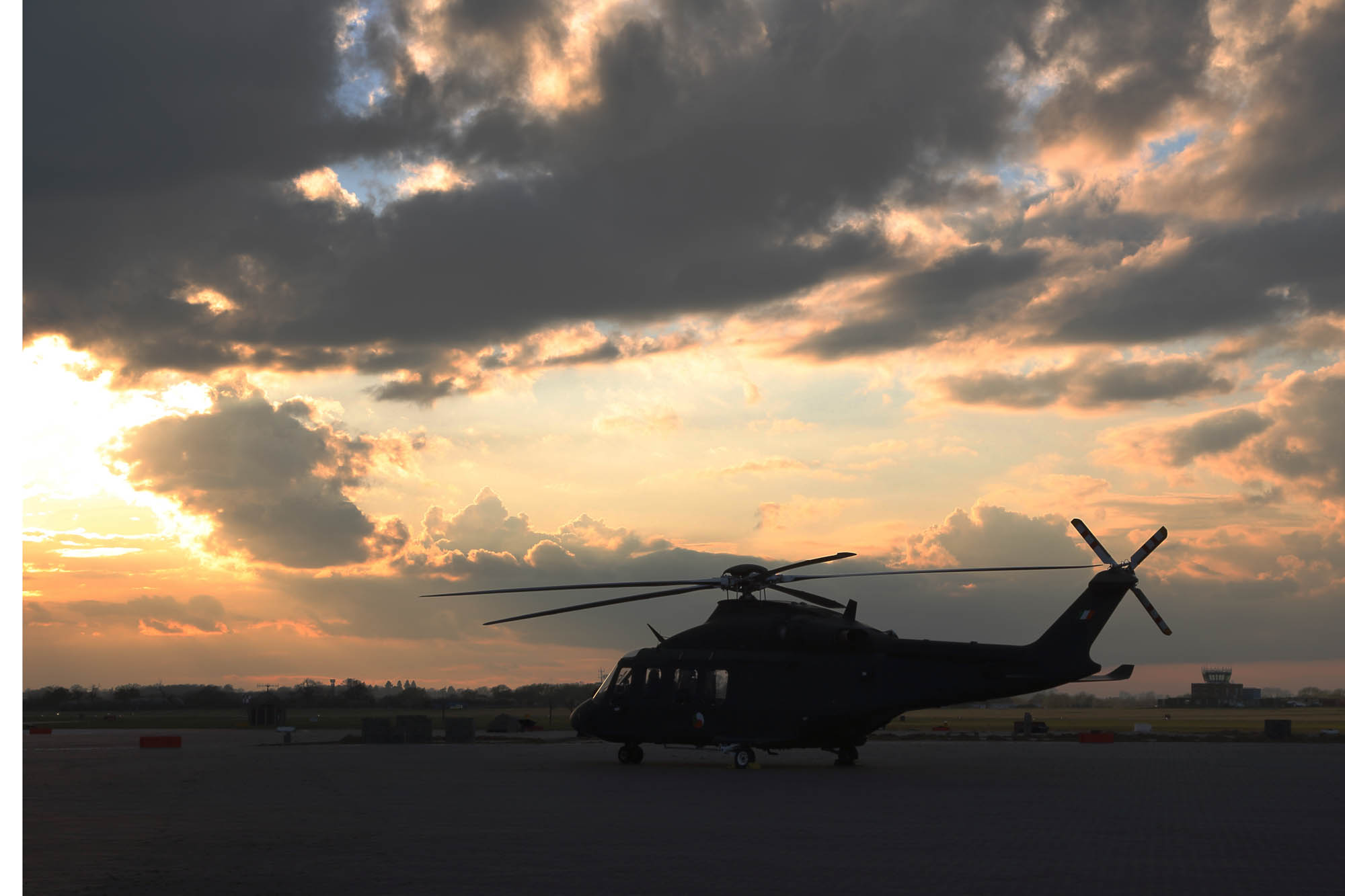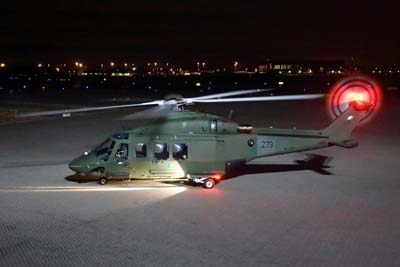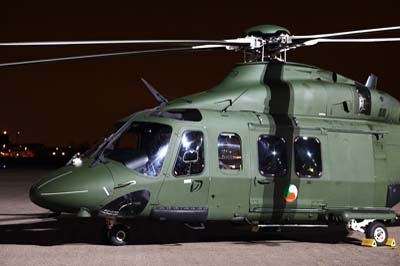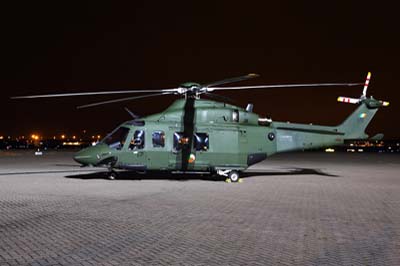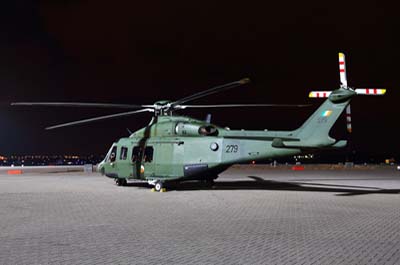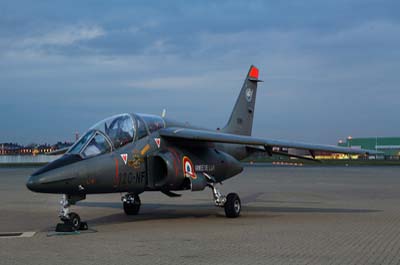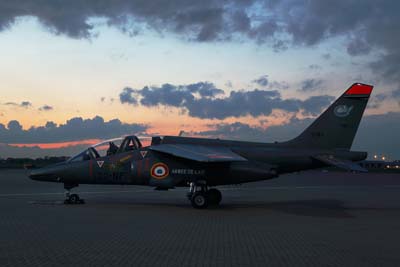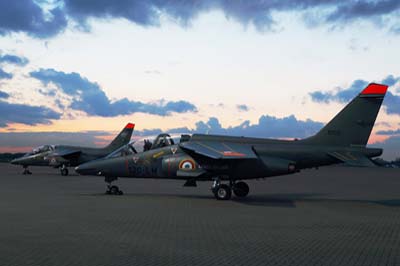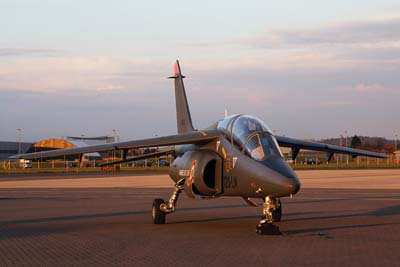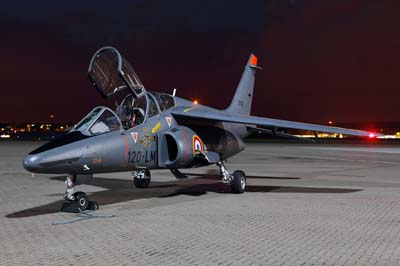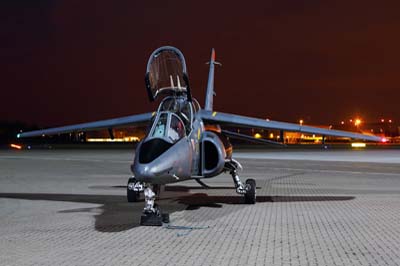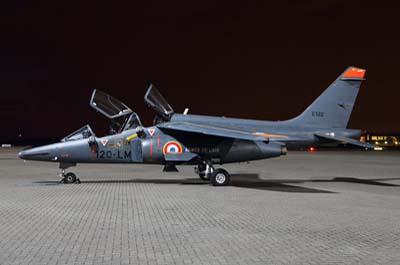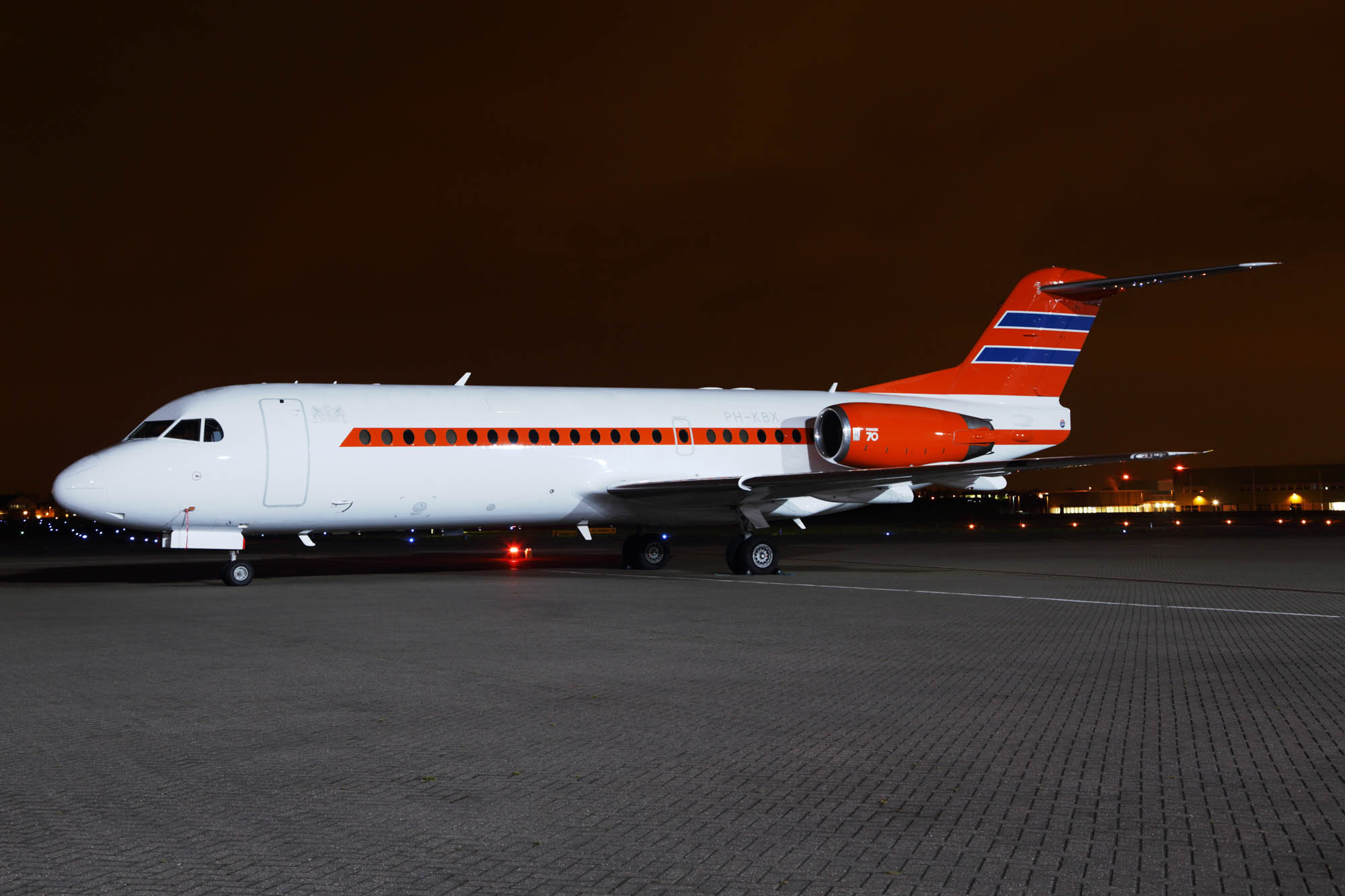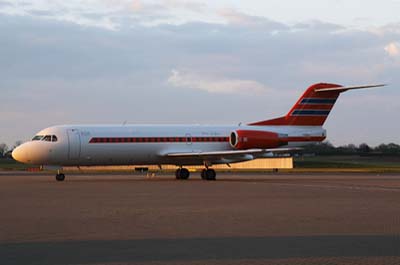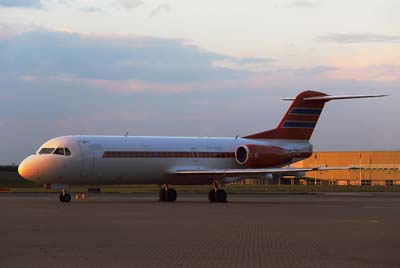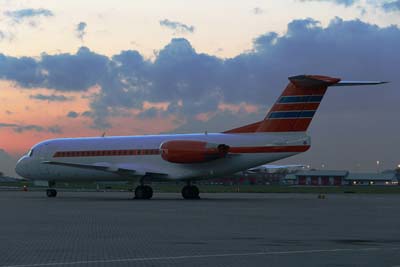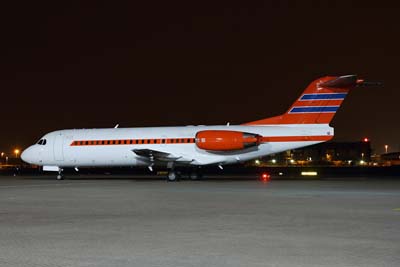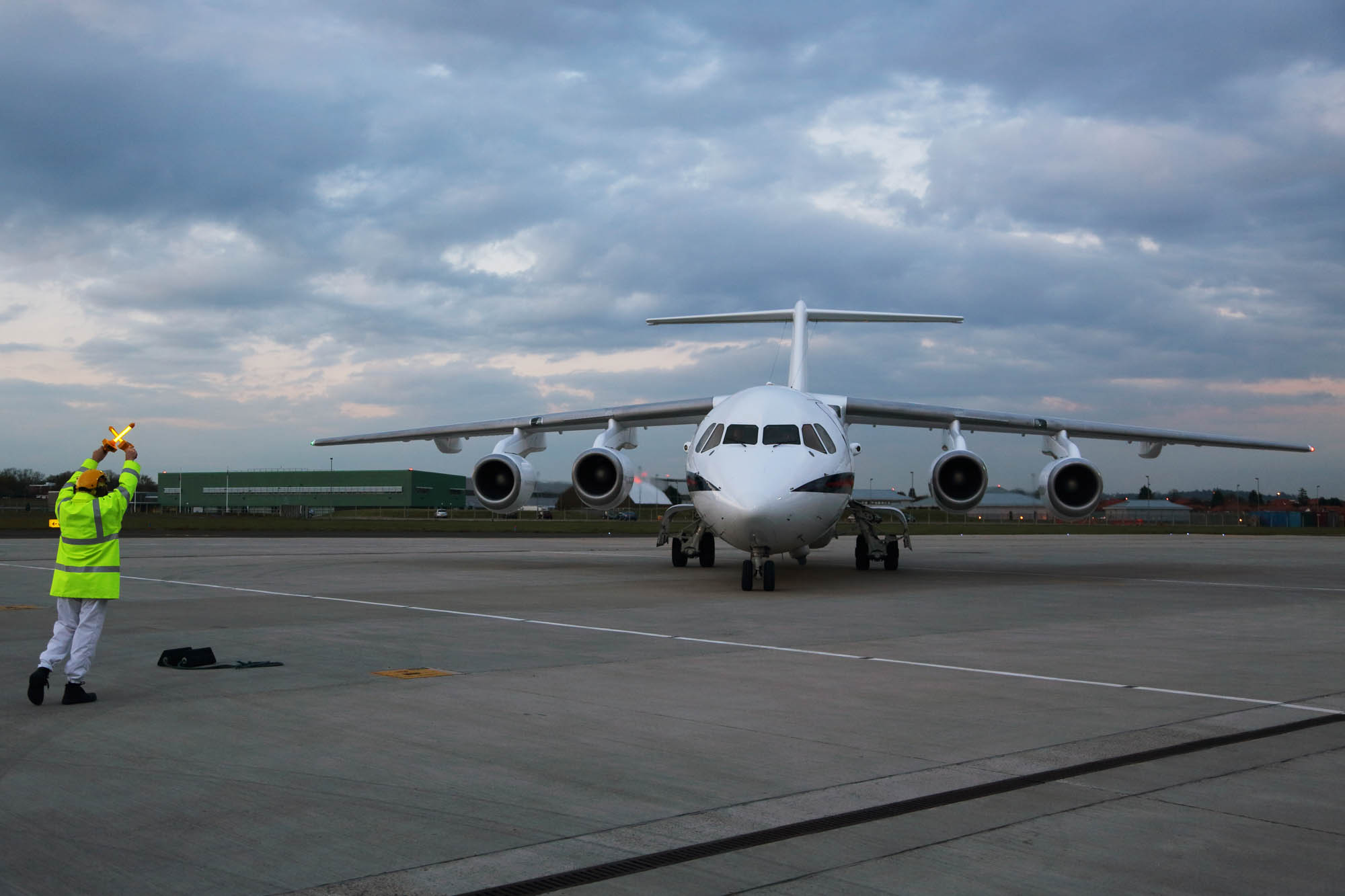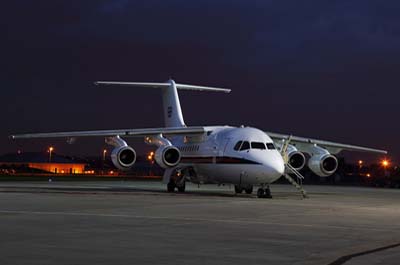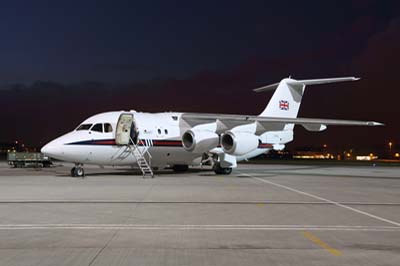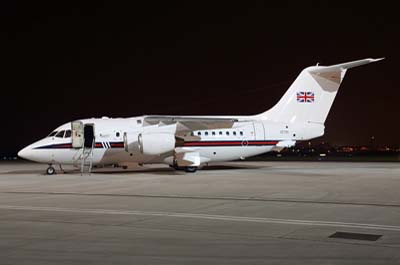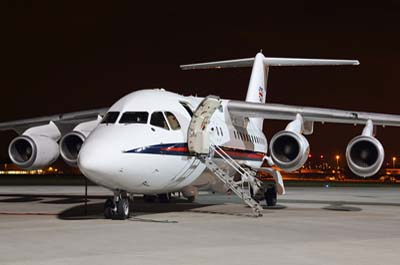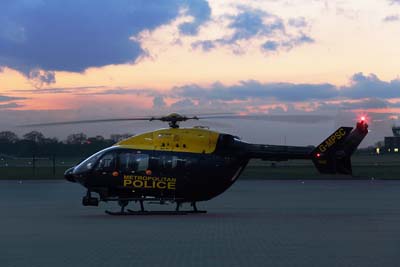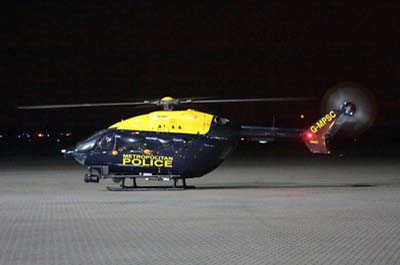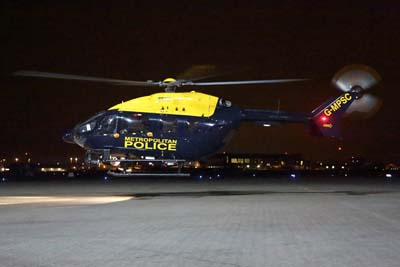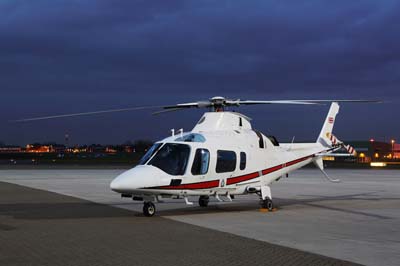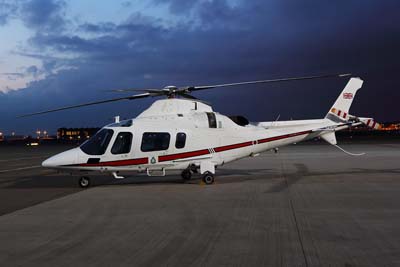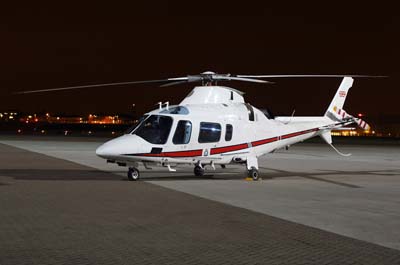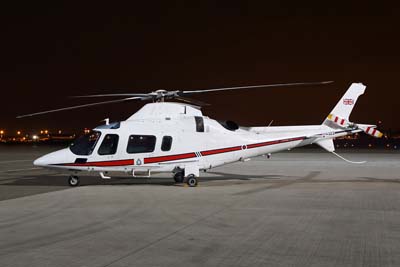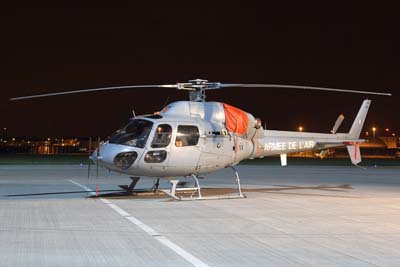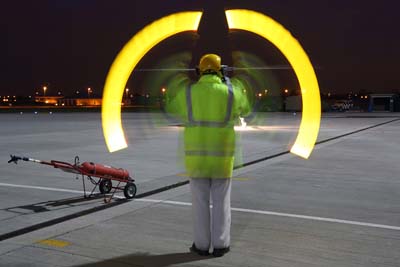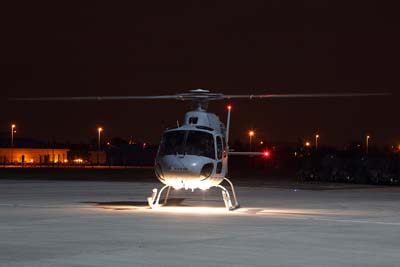Night photo shoot XI
RAF Northolt
April 12, 2012
|
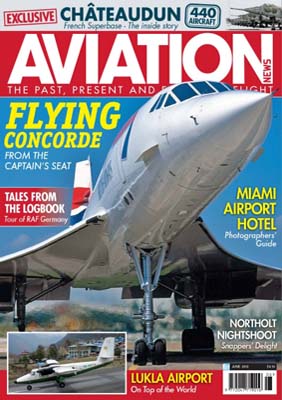 Philip Stevens for Aviation News reports:
Philip Stevens for Aviation News reports:
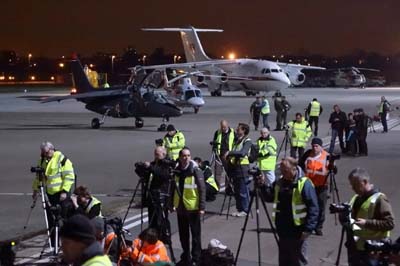 |
Photographers are required to wear fluorescent bibs almost all use tripods to steady the camera during the one to ten second exposures usually required. On the night 135 of the 150 that had donated in advance easily found enough room for their tripods, the long flight line had been extended to allow space for the BAE 146 to park in front of its hangar. |
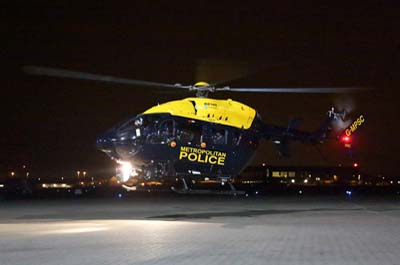 |
The Eurocopter EC-145 operated by the Metropolitan Police had attended a previous photo shoot. Arriving just as it became dark they were on the ground for around an hour before returning to duty they departed but only after a low-level hover and manoeuvring demonstration for the photographers. A hand-held camera with shutter speed of 1/100th and an ISO setting of 25600 was used to capture the hovering helicopter. |
RAF Northolt in north-west London is the only former Battle of Britain airfield which is still operational with the RAF and is the ideal venue for night photo shoots aimed at photographers who wish to get images of aircraft that are different, access to operational aircraft at night is virtually impossible at other RAF stations.
Money raised through donations from those attending is used for the restoration of Northolt's Battle of Britain Sector Operations Building (Building 27) which was the prototype of United Kingdom's air defence system devised by Air Chief Marshal Sir Hugh Dowding (later Lord Dowding) in 1929. Due to be demolished four years ago, the then Station Commander Group Captain Guy van den Berg realised how important the building was and started a fight to save it. The Air Historical Branch approached English Heritage and it was subsequently given a Grade 2 listing.
In 2007 Phillip Dawe a retired Air Traffic Controller was asked to drive the project forward. He now spends six days a week doing much of the building restoration himself. As the photo shoot organiser and key fund raiser, he explained his motivation; "Building 27 is not important because of its architecture but for what went on in the building. We don't have public money so we have to fund raise. We are in year three of a six year project, the photo shoots have raised over £35,000."
On the night
April showers had threatened but thankfully failed to materialise. Starting at 19:00 as the sun was beginning to set 135 photographers began to make the most of the interesting selection of six aircraft bolstered by another two which arrived later in the evening.
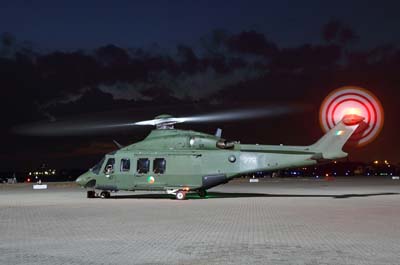 |
The Irish Air Corps Agusta-Westland AW139 of 301 Squadron brought four pilots on the training flight two for outbound and two for the return leg to Baldonnel-Casement in the Republic of Ireland. The aircrew powered up the engines for the photographers. |
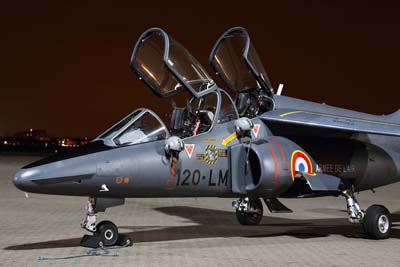 |
Two Dassault/Dornier Alpha Jet Es light attack and advanced jet trainers from the Ecole de transition Opérationnelle (ETO 008) at Cazaux near Bordeaux were night stoping. The student pilots on the final stages of their course prior to moving to a frontline squadron were here as part of a navigational training exercise. The lighting is so good that the shots look like they were taken in a studio. The aircrew were on-hand to open the cockpit canopy and position their helmets when requested. |
Two French Alpha Jets from Cazaux were on a foreign land away which is required by their training schedule, they should have been accompanied by a Belgian Alpha Jet also from the Advanced Jet Training School (AJeTS) but it had to cancel on the day due to the lack of an available pilot. The Irish Air Corps Agusta-Westland AW139 of 301 Squadron was also night-stopping following a navigational training exercise to and from Baldonnel. An Aérospatiale AS-555AN Fennec of EH 03.067 Armée de l'Air and based at Villacoublay was making a second appearance at the night shoot. Both sets of helicopter aircrew were happy to perform an engine run for the photographers during the evening. Netherlands government officials with the Dutch Royal Family were visiting with their Fokker 70 had consented to Phillip Dawes' request for it to be photographed. During the evening a Eurocopter EC-145 with the Metropolitan Police came and went. A BAE 146 CC.2 arrived and parked alongside an Agusta A.109E Power Elite both are with 32(TR) Squadron and based at Northolt.
A little black book and a bucket list
Phillip Dawe admitted that it is no easy task in attracting aircraft for the photographers. These days everyone is subject to defence cuts. Philip Dawe said before the event; "We are hoping for a 22 Squadron Search and Rescue Sea King for an hour or so, he will come in refuel and go." The most frustrating part is the no-shows, promised aircraft can cancel for technical or operational reasons at the last minute. The Westland Sea King HAR.3 was another casualty failing to show due to a failed GPS (Global Positioning System). An Army Air Corps Gazelle from 8 Flight was also expected but was diverted to Castlemartin Range in Wales on the day.
In deciding who to invite Phillip Dawe is always open to sensible suggestions; "I have a bucket list of what people have asked for." However as the short runway can't accept all aircraft types and a rule that single engine aircraft cannot over fly London his options are limited. He admitted that he has a little black book of contact names to start the ball running, but it can take time; "The Eastern Europeans need something like a year's notice to get approval at their end for a visit." The star of the previous photo shoot held in October 2011 was a Sécurité Civile Turbo Firecat water bomber from Marseille in the south of France, its eventual attendance took two years to organise. He may contact an air base first but ultimately he has to go through official channels such as Embassy Air Attachés. The current Station Commander is Group Captain Tim O'Brien, Phillip Dawe is grateful for his help; "He is ex VC-10 tankers he has some good contacts and is very supportive."
The photography
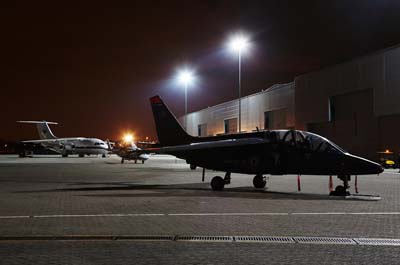 The concrete hard-standing in front of the huge 32(TR) Squadron hangar can cater for six to ten aircraft with at least 180 photographers keeping behind a white line. The aircraft are positioned well under bright white stadium flood lighting eliminating the need for colour correction during image post processing. Photographers are required to bring a florescent safety vest and arrive on time at around 18:00, the event usually last at least three hours. You are asked not to use flash because of the possibility of pilots using night-vision goggles. A tripod is therefore used by most photographers enabling slow shutter speeds of several seconds which is perfect for attractive propeller or rotor blur during the engine-runs.
The concrete hard-standing in front of the huge 32(TR) Squadron hangar can cater for six to ten aircraft with at least 180 photographers keeping behind a white line. The aircraft are positioned well under bright white stadium flood lighting eliminating the need for colour correction during image post processing. Photographers are required to bring a florescent safety vest and arrive on time at around 18:00, the event usually last at least three hours. You are asked not to use flash because of the possibility of pilots using night-vision goggles. A tripod is therefore used by most photographers enabling slow shutter speeds of several seconds which is perfect for attractive propeller or rotor blur during the engine-runs.
The flight line is sufficiently long for all photographers to easily get a good position for each shot, especially as everyone swiftly moves from one aircraft to another gaps open up. Early in the evening the light changes very quickly as the sun sets producing a variety of different images. Pilots will pose with their aircraft if requested and switch on navigation lights. 80% to 90% of attendees have been to many of the previous shoots, this was the eleventh.
A minimum donation of £20 is requested plus £6 on the night to cover any aircrew's hotel expenses. Philip Dawe is happy to organise many more events as long as photographers wish to attend; "It's a nice way to raise money, everyone wins, we get the money, photographers get the photographs and these are passed to the aircrew."
|
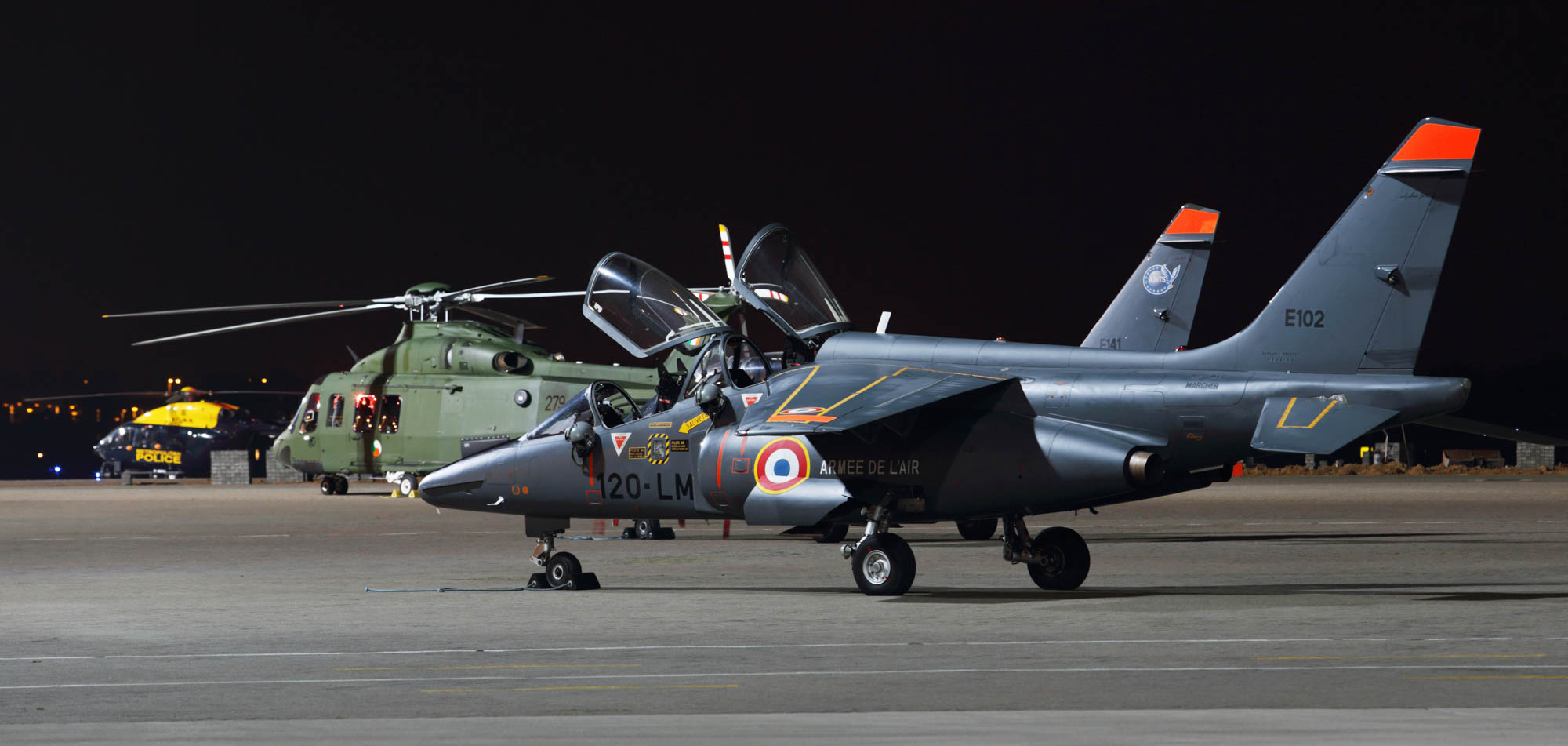 |
| Aircraft are well spaced down the photo shoot flight line, the powerful white light stadium floodlights are perfect for the photographers. |
Irish Air Corps Agusta-Westland AW139. Held in April this photo shoot enabled photographers to take advantage of the setting sun.
The light changed dramatically over the first hour before it got fully dark. |
| Left to right: Agusta-Westland AW139 (279) of 301 Squadron Irish Air Corps based at Casement Aerodrome (Baldonnel) near Dublin. |
| Left to right: French Air Force Dassault-Dornier Alpha Jet E (E141 '120-NF') of the Advanced Jet Training School (AJeTS) ET0 01.008/02.008 (Ecole de Transition Opérationnelle) from Cazaux (BA 120). |
| Left to right: French Air Force Dassault-Dornier Alpha Jet E (E102 '120-LM') of the Advanced Jet Training School (AJeTS) ET0 01.008/02.008 (Ecole de Transition Opérationnelle) from Cazaux (BA 120). |
| Fokker 70 (PH-KBX) of Netherlands government. |
The Netherlands government Fokker 70 was providing support for the Dutch Royal Family. Queen Beatrix's son Prince Johan Friso has been in a coma since a skiing accident in February. He was transferred to Wellington Hospital in London soon after the accident in Austria.
Left to right: Fokker 70 (PH-KBX) of Netherlands government. |
The 32(The Royal) Squadron BAE 146 CC.2 returned to its home base of RAF Northolt during the event which was a bonus for the photographers.
A gap in the flight line had been left outside its hangar. |
| Left to right: BAE 146 CC.2 (ZE700) of 32(TR) Squadron. |
| Left to right: EC-145 (G-MPSA) of the Metropolitan Police. |
Agusta A.109E Power Elite 32(TR) Squadron aircraft are readily available to fill in for any promised aircraft that fail to make it.
Left to right: Agusta A.109E Power Elite (ZR322) operated by 32(TR) Squadron in the VIP transport role. |
Arriving during the day from its base of BA 107 Villacoublay near Paris the Armée de l'Air aircrew of Aérospatiale AS-555AN Fennec were happy to briefly power up the engines.
Left to right: Aérospatiale AS-555AN Fennec (5468 '67-VX') of EH 03.067 'Parisis' Armée de l'Air based at Villacoublay |

